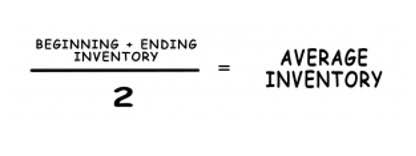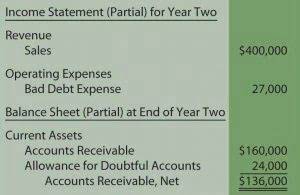
Additionally, turnover can also represent the pace of inventory sales by a company. The Selling, Marketing, and Administrative (SMA) expenses, amounting to $2,436,508 thousand, encompass all the costs related to promoting, selling, and managing the company’s products. These expenses are critical for maintaining and growing the company’s market presence, supporting customer relationships, and ensuring efficient operational management. By investing in these areas, Hershey aims to drive sales growth, enhance brand recognition, and streamline its internal processes. The first major component of internal accounting systems for management’s use is the company’s system for establishing budgetary plans and setting performance standards.
- We empower accounting teams to work more efficiently, accurately, and collaboratively, enabling them to add greater value to their organizations’ accounting processes.
- The MA team would gather historical data, sales projections, and cost estimates to develop a budget that outlines expected revenues and expenses for the upcoming year.
- Forecasting is the act of predicting how financial situations will shape the future.
- Salaries appear on the income statement in the period incurred and thus form part of the net profit or loss the business is going to realize.
- I think this text is a good starting point for OER content for an introductory managerial accounting course.
What are the Examples of Expenses?
- For managerial accounting, weekly and monthly budgets govern the types of products sold, product inventory levels, and the price points needed to ensure that businesses maintain sufficient margins to cover costs and remain solvent.
- An account receivable report is a periodic report that organizes a company’s receivables according to the length of time the debt has remained unpaid.
- The specific functions and principles followed can vary based on the industry.
- According to the IMA, the compensation for CMAs globally is 58% higher than that of non-CMAs.
- The treasury department will also assign funding credit to business units who bring in deposits (resources) to the bank.
While cash flow involves all the cash inflow and outflow of a company, funds flow includes only the net cash within an organization that can be used as working capital. Funds flow analysis aims at providing an answer to the change in financial position as compared to other accounting periods. It compares the inflow and outflow of funds as documented in two comparative balance sheets. Under budgetary control, future financial needs are documented alongside their costs and arranged in an orderly manner for efficient business operations. Inventory turnover is a financial ratio that shows the number of times a company has sold and replaced inventory over a given period. Inventory turnover analysis involves the process of studying this ratio and coming up with enough information for better business administration.
Constraint analysis
- Any company, large or small, that wants to be more successful and survive in the evolving marketplace needs management accounting.
- Sometimes, accounting experts also use this term to determine how quickly a business collects cash from its credit-based clients.
- Although the specific underlying details of managerial accounts may vary from one business to the next, they often itemize a company’s spending practices, cash flow streams, debts, and assets.
- However, the financial and accounting industry expert considers a business’s liquidity positive—the more the liquidity, the easier for a company to pay its short-term liabilities or CLs.
- Management accounting helps in analysing and recording financial information which can be used by a company to increase its efficiency and productivity.
Anecdotally, the company thinks that the individuals are a segment that wastes resources. The analysis below compares these two segments and adds up the annual sales from each, less the costs of visits and order processing. In reality, the individual customer segment is more profitable, even though the small businesses place more orders annually. There are a variety of ways to keep current and continue to build one’s knowledge base in the field of management accounting. Certified Management Accountants (CMAs) are required to achieve continuing education hours every year, similar to a Certified Public Accountant.
What Are the Five Major Types of Accounting?
Financial accounting activities are regulated by external standards as opposed to the more flexible requirements placed on managerial accounting procedures. Managerial accounting gives business owners appropriate information to make these important financial decisions. The analysis would consider the cost of goods sold (COGS) and the revenue generated from sales and determine if the business https://www.bookstime.com/articles/full-charge-bookkeeper can fund this price increase or if a cheaper alternative is better. Before we compare the two types of accounting, here are the important features of financial accounting. With this, we have closely understood the importance of management accounting for the managers as well as the business. Moreover, aside from the regular financial information, it also includes non-financial information.

Global organizations trust Net Zero Cloud to help them meet their ESG goals.

Appropriate financial planning helps a company to easily determine all its future needs. A company’s future operations are also easily streamlined for achieving business goals and objectives. It helps to measure the amount of contribution a product has to the overall cost and profit of a company. Financial accounting may seem to enable external management accounting stakeholders like investors and lenders to make more informed decisions but this is not the main aim for the company keeping accounts. A company may not need the help of external institutions and still engage in financial accounting activities. For small or sole proprietary businesses, the owner of a business is usually part of the management.

Start tracking key financial metrics with ease with our Monthly Financial Reporting template. In this blog, we will see what expenses are, how they are recorded, and the various types of expenses, along with an example for better understanding. We will also understand what the difference is between expenses and expenditures. The median annual salary for accountants and auditors in 2021, according to the Bureau of Labor Statistics. “Presentation, education technology, and information technology skills are also critical. Less critical but also important is a knowledge of social media, marketing, and sales,” he says.

